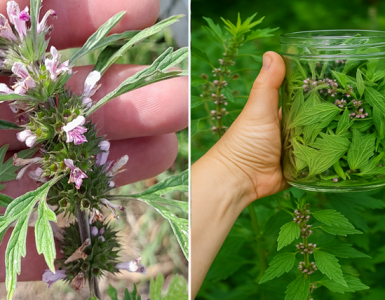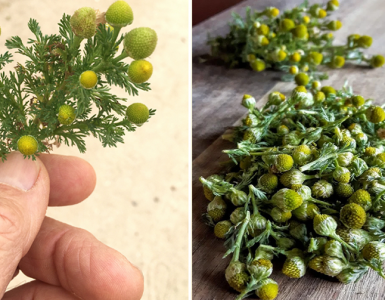Aquaponics is a sustainable and highly efficient system that combines aquaculture (raising fish) and hydroponics (growing plants without soil). In this system, the fish waste provides nutrients for the plants, and the plants help filter and clean the water for the fish, creating a symbiotic relationship. One of the best parts about aquaponics is that you can create a setup at home without spending a fortune.
This guide will walk you through how to build and maintain a home aquaponics system on a budget, keeping it cheap, easy, and highly productive.
Benefits of a Home Aquaponics System
Sustainable and eco-friendly: Uses 90% less water than traditional gardening.
Fresh organic produce: Grow your own vegetables, herbs, and fruits at home.
Healthy fish: Raise fish like tilapia or goldfish, which can be harvested or kept as pets.
Space-saving: Perfect for homes with limited space, and systems can be set up indoors or outdoors.
Basic Components of an Aquaponics System
Before we get started, it’s important to understand the essential components of a basic aquaponics system:
Fish Tank: This holds the fish and is where fish waste is produced.
Grow Bed: Where the plants grow. The grow bed is filled with a growing medium such as gravel or clay pebbles, which filters the water.
Water Pump: Pumps water from the fish tank to the grow bed.
Grow Medium: Gravel, clay pellets, or other media that supports plant roots and helps filter the water.
Fish: The source of nutrients for the plants.
Plants: The plants clean the water by absorbing the nutrients and return clean water to the fish tank.
Plumbing/Piping: Tubes that allow water to circulate between the fish tank and grow bed.
Step-by-Step Guide: Building Your Aquaponics System
Step 1: Choose the Location
Indoors or Outdoors: Determine whether you want to set up your system inside or outside. If you’re indoors, ensure the area receives enough natural light or use grow lights.
Space: A small balcony, patio, or even a sunny corner inside the house can be perfect for a small aquaponics setup.
Step 2: Gather the Materials (Budget-Friendly Options)
Fish Tank: You don’t need an expensive tank. Use an old fish tank, plastic storage containers, or even a repurposed barrel.
Grow Bed: A large shallow plastic container or repurposed wood frame lined with waterproof material can serve as your grow bed.
Water Pump: Purchase a small aquarium pump, which is cheap and readily available at pet stores or online.
Grow Medium: Use inexpensive materials such as gravel, crushed rock, or expanded clay pebbles to support the plants.
PVC Piping: PVC pipes are affordable and easy to use for circulating water. Cut them to size and arrange them to connect the fish tank and grow bed.
Fish: Start with easy-to-care-for fish like goldfish, tilapia, or other freshwater species.
Plants: Leafy greens like lettuce, spinach, herbs like basil, and even tomatoes are great beginner choices for aquaponics.
Step 3: Set Up the Fish Tank
Choose a Tank: Select a container that can hold at least 20-40 gallons of water, depending on the size of your system. The larger the fish tank, the more plants you can grow.
Install the Water Pump: Place the water pump in the fish tank to push water to the grow bed. Make sure the pump is powerful enough to circulate water efficiently.
Connect PVC Pipes: Use PVC pipes to connect the fish tank to the grow bed. Ensure that the piping allows water to flow from the fish tank to the plants and then back to the fish tank. Use a bell siphon (a simple pipe setup) to drain the grow bed automatically once it’s flooded.
Step 4: Set Up the Grow Bed
Choose a Container: For the grow bed, a large shallow container or plastic tub works well.
Add the Grow Medium: Fill the grow bed with your chosen grow medium (gravel, clay pebbles, or other porous materials). This medium helps filter the water and supports plant roots.
Position the Grow Bed: Place the grow bed slightly above the fish tank so that gravity helps water flow back into the tank once the grow bed is flooded.
Step 5: Add the Fish
Choose Your Fish: Start with hardy freshwater fish like tilapia, goldfish, or koi. These species can tolerate fluctuations in water conditions, making them ideal for beginners.
Acclimate the Fish: Before adding fish, make sure the water in the tank has been treated to remove chlorine and has had time to stabilize.
Feed the Fish: Fish food will eventually become plant food, so ensure you feed your fish regularly. Keep an eye on how much food they consume, as overfeeding can lead to water quality issues.
Step 6: Plant Your Vegetables or Herbs
Transplant Seedlings: Plant your seedlings directly into the grow bed, burying the roots into the growing medium. You can also grow plants from seeds, but starting with small plants is easier for beginners.
Choose Fast-Growing Crops: Leafy greens like lettuce, kale, spinach, and herbs like basil, mint, and parsley are easy to grow and benefit the most from aquaponics.
Monitor Growth: Ensure that your plants are receiving enough light. If you’re growing indoors, consider using grow lights to supplement natural sunlight.
Maintaining Your Aquaponics System
1.Monitor Water Quality
The key to a successful aquaponics system is maintaining water quality for both the fish and plants. Regularly check the pH, ammonia, nitrites, and nitrates. An ideal pH for an aquaponics system is around 6.8 to 7.2.
pH: Keep the water pH neutral or slightly acidic.
Ammonia and Nitrites: These should stay as low as possible to avoid harming the fish. The plants and bacteria in the system will help to manage ammonia and nitrite levels.
2.Feed the Fish Regularly
Feed your fish 1-2 times a day, but avoid overfeeding, which can lead to excess waste and poor water quality. Remove any uneaten food after about 20 minutes.
3.Check Water Flow
Ensure the water is circulating properly between the fish tank and the grow bed. Clean the pump or pipes periodically to prevent clogging.
4.Prune Plants as Needed
As your plants grow, be sure to prune them regularly to keep the system balanced. Harvest leafy greens and herbs as they reach maturity, and replant as needed.
5.Add Water
Water will evaporate from the system over time, so make sure to top it up as needed. Avoid using tap water with chlorine; let it sit for 24 hours to allow the chlorine to evaporate, or use dechlorinated water.
Cheap and Easy Tips for Success
Start Small: You don’t need a massive system to be successful. Start with a small fish tank and grow bed, then expand as you gain confidence.
Repurpose Materials: Use items you already have around the house, like old containers, buckets, or plastic totes for the fish tank and grow bed.
Avoid Expensive Fish: Start with hardy, low-cost fish like goldfish or tilapia. They’re easy to care for and can tolerate beginner mistakes.
Choose Fast-Growing Plants: Herbs and leafy greens grow quickly, providing faster results and helping balance your system.
Building a home aquaponics system doesn’t have to be expensive or complicated. By repurposing materials, choosing hardy fish, and selecting fast-growing plants, you can create a productive and sustainable system in your own home. With minimal maintenance and care, you’ll be able to enjoy fresh fish and organic vegetables year-round, all while reducing your environmental impact. Aquaponics is an exciting way to get involved in sustainable living, and it’s easier and cheaper than you might think!




















Add comment